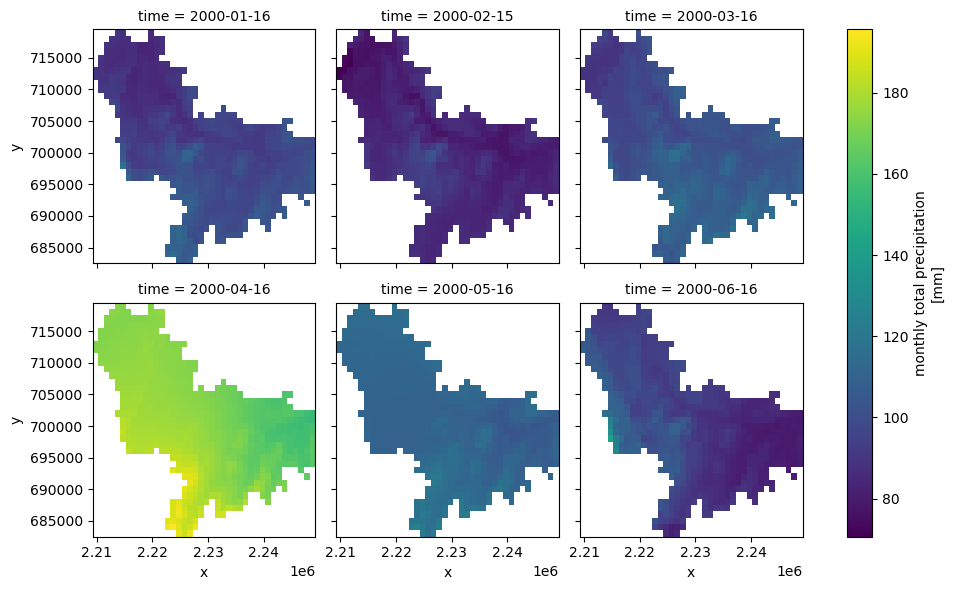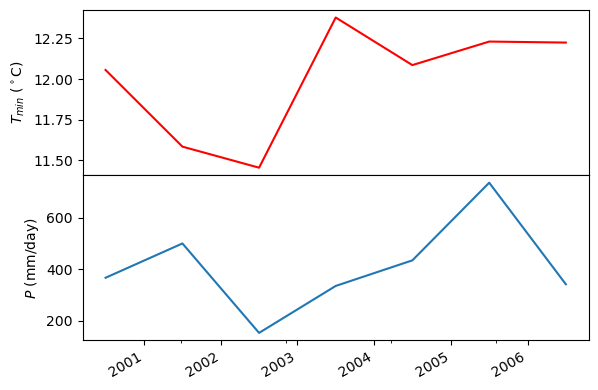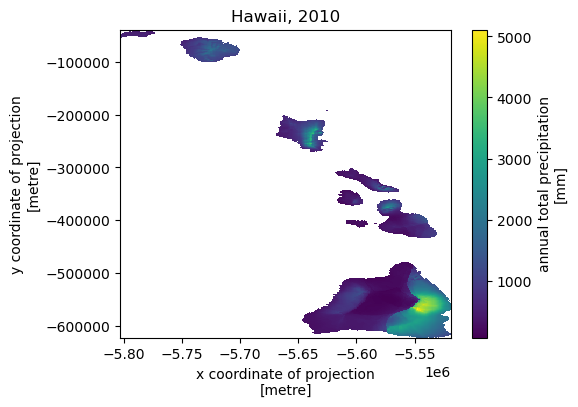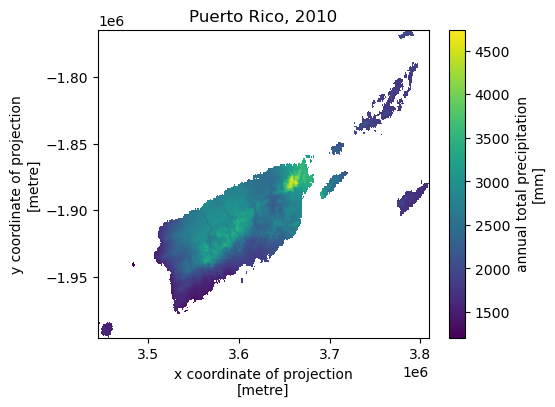This page was generated from daymet.ipynb.
Interactive online version:
Climate Data from Daymet#
[1]:
from __future__ import annotations
from pathlib import Path
import matplotlib.pyplot as plt
import pydaymet as daymet
from pynhd import NLDI
The Daymet database provides climatology data at 1-km resolution. First, we use PyNHD to get the contributing watershed geometry of a NWIS station with the ID of USGS-01031500:
[2]:
geometry = NLDI().get_basins("01031500").geometry.iloc[0]
PyDaymet allows us to get the data for a single pixel or for a region as gridded data. The function to get single pixel is called pydaymet.get_bycoords and for gridded data is called pydaymet.get_bygeom. The arguments of these functions are identical except the first argument where the latter should be polygon and the former should be a coordinate (a tuple of length two as in (x, y)).
The input geometry or coordinate can be in any valid CRS (defaults to EPSG:4326). The date argument can be either a tuple of length two like (start_str, end_str) or a list of years like [2000, 2005].
Additionally, we can pass time_scale to get daily, monthly or annual summaries. This flag by default is set to daily. We can pass time_scale as daily, monthly, or annual to get_bygeom or get_bycoords functions to download the respective summaries.
PyDaymet can also compute Potential EvapoTranspiration (PET) at daily timescale using three methods: penman_monteith, priestley_taylor, and hargreaves_samani. Let’s get the data for six days and plot PET.
[3]:
dates = ("2000-01-01", "2000-01-06")
daily = daymet.get_bygeom(geometry, dates, variables="prcp", pet="hargreaves_samani")
[4]:
ax = daily.pet.plot(x="x", y="y", row="time", col_wrap=3)
ax.fig.savefig(Path("_static", "daymet_grid.png"), facecolor="w", bbox_inches="tight")

Now, let’s get the monthly summaries for six months.
[5]:
var = ["prcp", "tmin"]
dates = ("2000-01-01", "2000-06-30")
monthly = daymet.get_bygeom(geometry, dates, variables=var, time_scale="monthly")
[6]:
ax = monthly.prcp.plot(x="x", y="y", row="time", col_wrap=3)

Note that the default CRS is EPSG:4326. If the input geometry (or coordinate) is in a different CRS we can pass it to the function. The gridded data are automatically masked to the input geometry. Now, Let’s get the data for a coordinate in EPSG:3542 CRS.
[7]:
coords = (-1431147.7928, 318483.4618)
crs = "epsg:3542"
dates = ("2000-01-01", "2006-12-31")
annual = daymet.get_bycoords(
coords, dates, variables=["prcp", "tmin"], crs=crs, time_scale="annual"
)
[8]:
fig = plt.figure(figsize=(6, 4), facecolor="w")
gs = fig.add_gridspec(1, 2)
axes = gs[:].subgridspec(2, 1, hspace=0).subplots(sharex=True)
annual["tmin (degrees C)"].plot(ax=axes[0], color="r")
axes[0].set_ylabel(r"$T_{min}$ ($^\circ$C)")
axes[0].xaxis.set_ticks_position("none")
annual["prcp (mm/day)"].plot(ax=axes[1])
axes[1].set_ylabel("$P$ (mm/day)")
plt.tight_layout()
fig.savefig("_static/daymet_loc.png", facecolor="w", bbox_inches="tight")

Next, let’s get annual total precipitation for Hawaii and Puerto Rico for 2010.
[9]:
hi_ext = (-160.3055, 17.9539, -154.7715, 23.5186)
pr_ext = (-67.9927, 16.8443, -64.1195, 19.9381)
hi = daymet.get_bygeom(hi_ext, 2010, variables="prcp", region="hi", time_scale="annual")
pr = daymet.get_bygeom(pr_ext, 2010, variables="prcp", region="pr", time_scale="annual")
[10]:
ax = hi.prcp.plot(size=4)
plt.title("Hawaii, 2010")
ax.figure.savefig("_static/hi.png", facecolor="w", bbox_inches="tight")

[11]:
ax = pr.prcp.plot(size=4)
plt.title("Puerto Rico, 2010")
ax.figure.savefig("_static/pr.png", facecolor="w", bbox_inches="tight")
